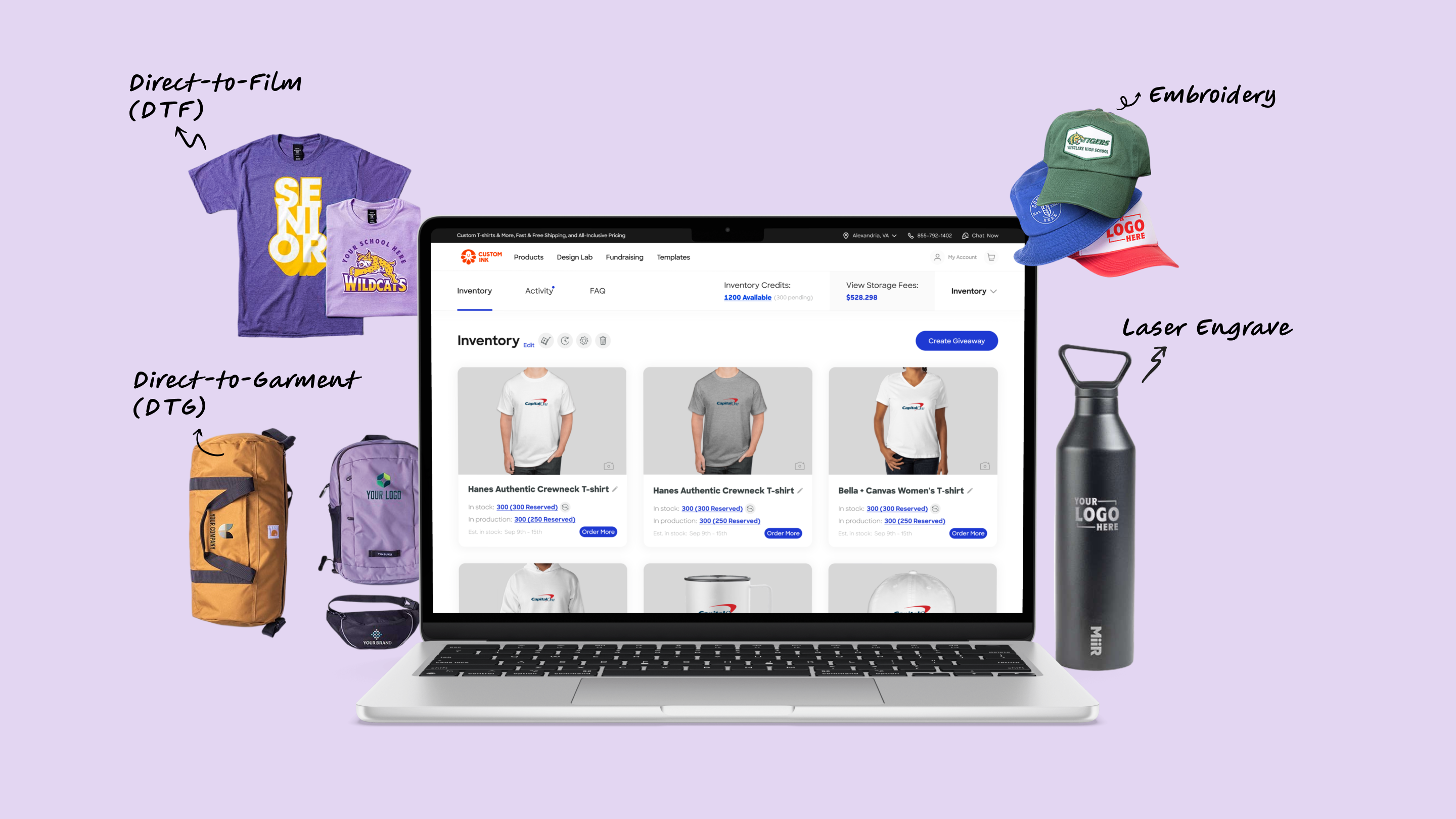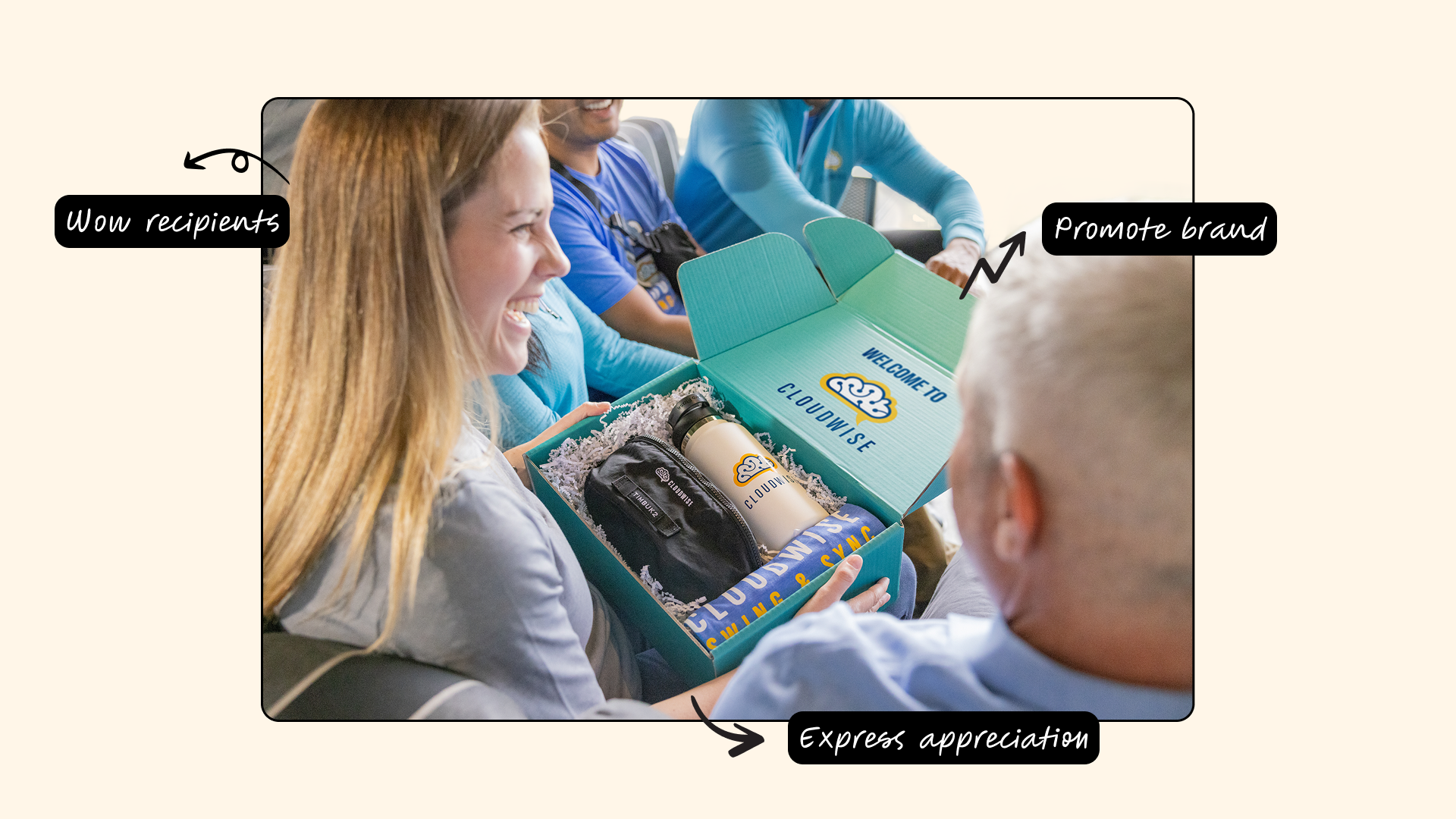

Acquisition:
Increase marketing exposure for Custom Ink's swag management solution—tailored for enterprise customers with complex ordering needs—on Custom Ink's website. Generate sales contacts and drive visiting traffic through the e-commerce funnel to build orders.
Activation:
Increase cart additions of multiple designs across categories (apparel and promotional products) that have high value—either expensive blank items like backpacks or large quantities of 50 or more. The successor of activation includes views of the "Learn more" about the option to store and distribute products from inventory (i.e., "Store with us, ship over time"), as well as selecting "Ship to multiple addresses" as the shipping option (in which Custom Ink will distribute orders to recipients as soon as the print is ready).
Conversion:
Convert customers who place bulk orders through the e-commerce funnel to ship their orders to Custom Ink's warehouse (including both self-service and chat-assisted orders).
Engagement:
Help customers distribute their first order from inventory to one or multiple addresses within a 28-day window from the purchase date. This minimizes operational costs by avoiding additional storage fees and ensures the fastest delivery time (i.e., time-to-door) and a satisfying unboxing experience.





Acquisition lever:
Bulk discount - Customers who buy 6 or more items (across categories) can enjoy tier-based pricing discounts. This makes "buy now, distribute later" more enticing than placing orders every quarter, which take longer and cost more.
Engagement lever:
Shared inventory: Customers from different departments in the same organization often share and reuse swag. For example, unused swag from conference events gets repurposed for employee welcome kits. Through integration with swag.com's roles and permissions system, each existing Custom Ink account can intuitively trigger network effects for one user to invite more users.







A/B testing for mid-funnel user activation in Lab
A/B testing for end-funnel cart conversion
Iterations for site navigation to showcase Swag Boxes in Solutions



